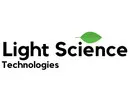British Tomato Fortnight is the ideal showcase for the world’s most popular fruit, and a reminder of its increasing appeal in the CEA sector. Tomato production has increased to 182 million tons in the past few years to match growing demand, making it one of the most important crops in the world. Demand has seen an increased effort to improve yield using greenhouse technology, but this has introduced its own issues when it comes to light exposure and shade. This is where LED grow lights come into their own.

Using the latest technology and design, LED grow lights can create the ideal conditions to improve tomato yield and growth, overcome challenges around shade, and allow for intelligent management of light intensity and duration. Light Science Solutions addresses some of the benefits of LED grow lights to indoor tomato growing:
Less energy consumption
Unlike many alternative greenhouse lighting solutions, LED lights are very low on energy consumption which can make the energy savings considerable.
Reduced heat output
LED lights also generate less heat so don’t need specialized air-cooling facilities, like HPS lights, and they last for an extremely long time – up to 60,000 hours, and are incredibly resilient. While LEDs do need precise power management, this can be easily done using intelligent technology and tools that are designed specifically to streamline the control of lighting in the greenhouse. There are some solutions on the market today that are capable of being program, designed, controlled, and monitored using intelligent systems that can be customized to suit specific greenhouse requirements. This makes the LED grow light a powerful associate for anyone looking to improve their tomato crop yields, particularly in a warmer climate. Their reduced heat output limits the impact of lighting heat on the crop which is one of the most important factors when managing crop yield in a warmer climate.
Greater control of growth response
Another aspect worth considering is the fact that the right supplemental lighting can fundamentally change plant productivity. If daily light is reduced by even 1% it can cause an equal drop in the crop yield.
More cost-efficient
LED grow lights have research and studies to back up their efficiency and their capability. These studies have also found that greenhouse tomato fruit quality wasn’t affected using LED grow lights, in fact, they found that tomato fruit quality remained consistent across multiple lighting options – but that LED grow lights were the most cost- and energy-efficient solution for indoor tomato growing.
This is where partnering with reliable LED grow light companies becomes critical. Aligning with a partner that equally understands the unique requirements of tomato growing within a warmer climate and who can work with you to manage light, heat, shadow, and timing with absolute precision is paramount. Of course, working with a trusted partner will also mean that you can trust in the quality of the LED grow lights themselves. You want lighting that isn’t manufactured to average standards, but rather lighting that comes with guaranteed performance, a warranty, and confirmed quality. These are simple things, but they can make all the difference to long-term investment into a lighting solution that can potentially transform your tomato yield.

For more information:
Light Science Technologies
[email protected]
www.lightsciencetech.com
